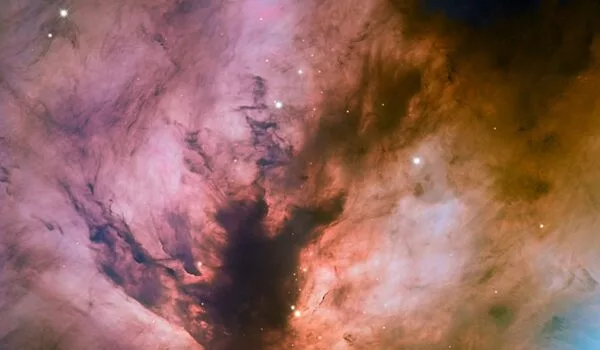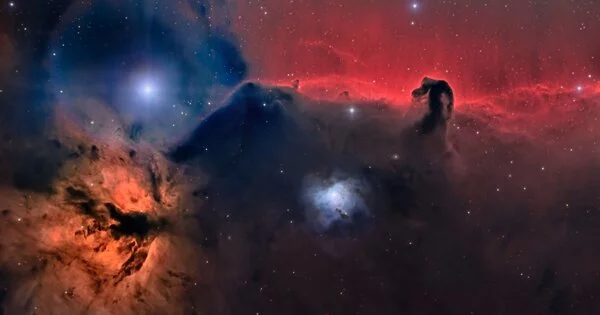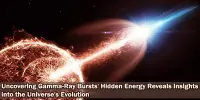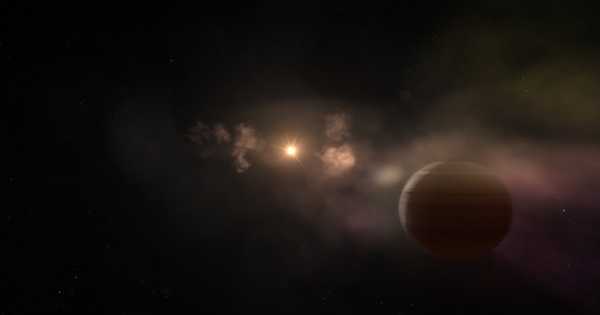The Flame Nebula is a diffuse nebula located in the constellation Orion, about 900 to 1,500 light-years away from Earth. The nebula is a region of ionized hydrogen gas, illuminated by the bright star Alnitak, which is one of the three stars that form Orion’s belt. It is also known as NGC 2024 and Sh2-277, is an emission nebula in Orion. It is located between 900 and 1,500 light-years away.
The nebula is known for its distinctive shape, which resembles a flickering flame, hence its name. It spans about 30 light-years across and is part of a much larger star-forming complex known as the Orion Molecular Cloud. The Flame Nebula gets its name from the reddish-orange glow created by ionized hydrogen gas that is being excited by the intense ultraviolet radiation emitted by nearby young stars. The nebula is also illuminated by a small group of bright stars known as the Trapezium Cluster, which are located just to the north of the Orion Nebula.
The bright star Alnitak (ζ Ori), the easternmost star in Orion’s Belt, shines energetic ultraviolet light into the Flame, knocking electrons away from the vast clouds of hydrogen gas that reside there. Much of the glow is caused by the recombination of electrons and ionized hydrogen. The dark network that appears in the center of the glowing gas is caused by additional dark gas and dust that lies in front of the bright part of the nebula. The Flame Nebula is part of the Orion molecular cloud complex, which also includes the well-known Horsehead Nebula.

The Flame Nebula is centered on a cluster of newly formed stars, 86% of which have circumstellar disks. X-ray observations by the Chandra X-ray Observatory reveal hundreds of young stars among an estimated population of 800 stars. X-ray and infrared images show that the cluster’s youngest stars are concentrated near the center.
The Flame Nebula is relatively young, with an estimated age of about 1 million years. It spans about 30 light-years across and is located about 1,400 light-years from Earth. The nebula is a popular target for amateur astronomers and can be easily seen with a small telescope or binoculars under dark skies.
The Flame Nebula is a popular target for astronomers, who study it to understand the processes of star formation and the properties of interstellar gas. It is often imaged using telescopes that can detect light in the infrared and radio wavelengths, which can reveal the structure and properties of the nebula in more detail than visible light observations.
















